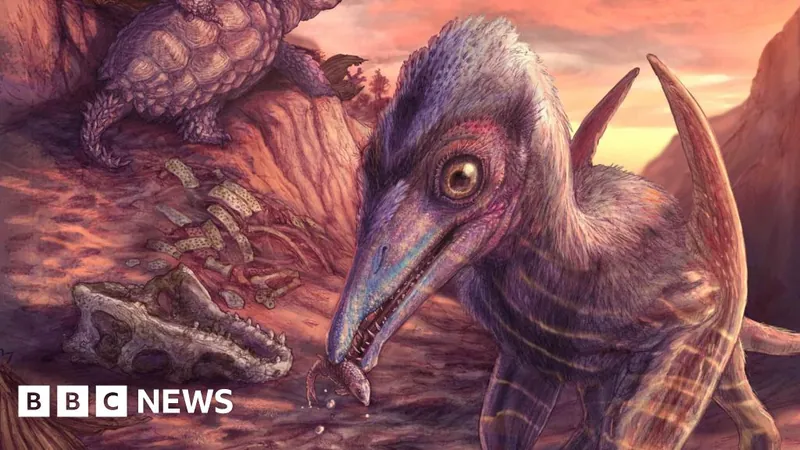
Jawbone Discovery Unveils New Species of Ancient Pterosaur
2025-07-07
Author: Jacques
A 200-Million-Year-Old Marvel Revealed
In an extraordinary discovery that shakes the foundations of paleontology, scientists have unearthed a jawbone from a previously unknown species of pterosaur—an ancient flying reptile that ruled the skies over 200 million years ago. This jawbone, found hidden in Arizona's arid landscapes, has now been confirmed as belonging to a brand-new species thanks to cutting-edge scanning technology.
Meet Eotephradactylus mcintireae: The Ash-Winged Dawn Goddess
Named Eotephradactylus mcintireae, which translates to "ash-winged dawn goddess," this fascinating creature's name pays homage to the volcanic ash that preserved its remains within an ancient riverbed. This fossil, estimated at around 209 million years old, is now recognized as the earliest pterosaur discovered in North America.
A Glimpse into the Past
The jawbone was uncovered in a fossil bed nestled within the Petrified Forest National Park, an area that, millions of years ago, was a sprawling riverbed. As layers of sediment gradually entombed the remains, they created a rich tapestry of ancient life, capturing not just bones but scales and even coprolites—fossilized remnants of ancient diets.
An Ecosystem Frozen in Time
According to Dr. Kligman from the Smithsonian's National Museum of Natural History, this site serves as a "snapshot" of a long-lost ecosystem where now-extinct creatures coexisted with early versions of species we recognize today, like frogs and turtles. It offers a remarkable view of evolutionary transitions as ancient species faced extinction while new groups emerged.
Hunting Secrets Revealed
Further analysis of the pterosaur's teeth—the worn-down tips suggest it fed on prey with tough exoskeletons. Dr. Kligman posits that primitive fish, armored with bony scales, were likely on the menu for this seagull-sized flyer.
A Call to Explore
This groundbreaking finding suggests that there are potentially many more undiscovered pterosaur fossils hidden within similar Triassic deposits worldwide. Dr. Kligman's team is hopeful that these ancient riverbeds could yield further insights into the lives of these magnificent prehistoric creatures.









 Brasil (PT)
Brasil (PT)
 Canada (EN)
Canada (EN)
 Chile (ES)
Chile (ES)
 Česko (CS)
Česko (CS)
 대한민국 (KO)
대한민국 (KO)
 España (ES)
España (ES)
 France (FR)
France (FR)
 Hong Kong (EN)
Hong Kong (EN)
 Italia (IT)
Italia (IT)
 日本 (JA)
日本 (JA)
 Magyarország (HU)
Magyarország (HU)
 Norge (NO)
Norge (NO)
 Polska (PL)
Polska (PL)
 Schweiz (DE)
Schweiz (DE)
 Singapore (EN)
Singapore (EN)
 Sverige (SV)
Sverige (SV)
 Suomi (FI)
Suomi (FI)
 Türkiye (TR)
Türkiye (TR)
 الإمارات العربية المتحدة (AR)
الإمارات العربية المتحدة (AR)